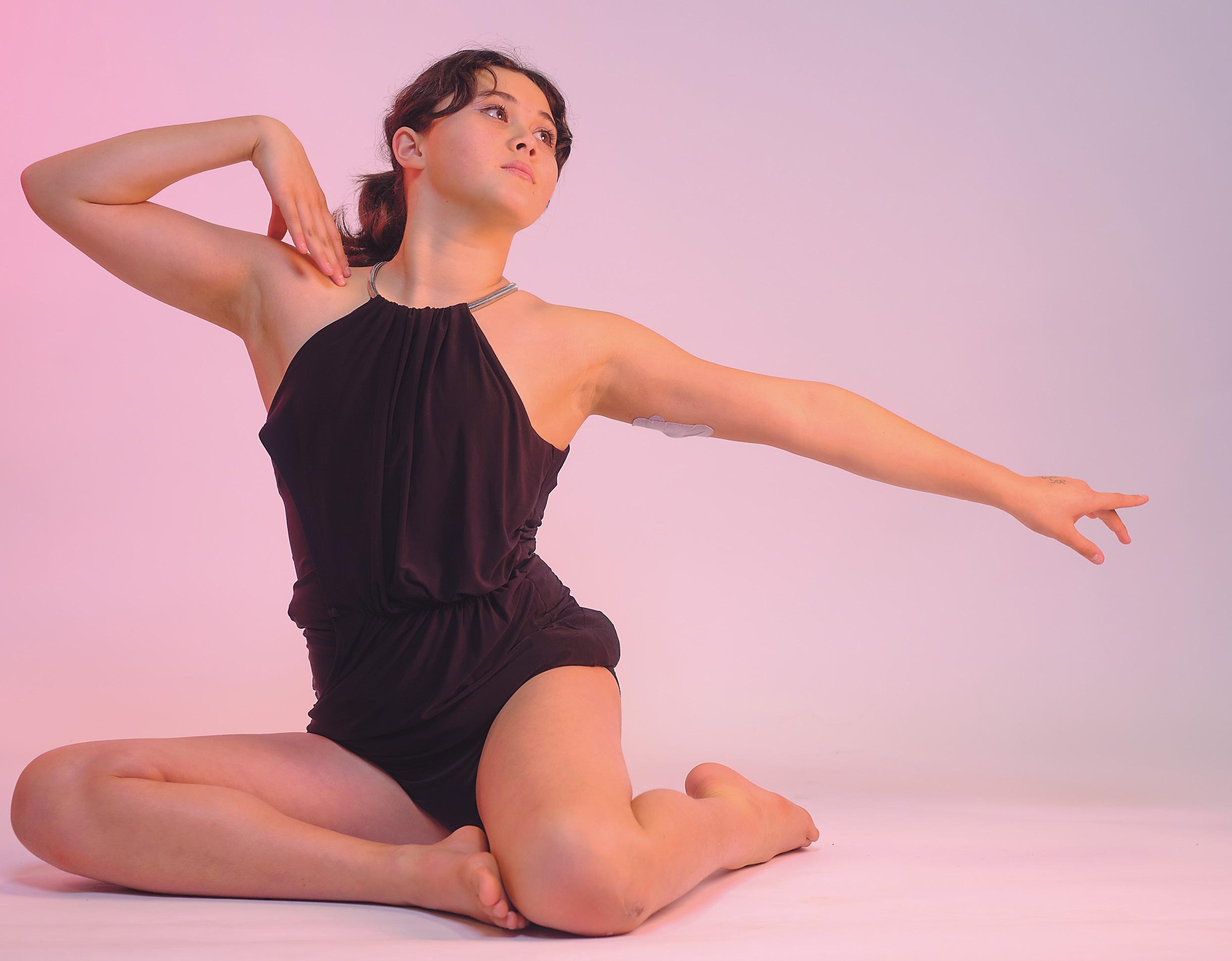
5 minute read
THE BOSS OF MY TYPE 1
Kiki Shimozono-Reid shares what it’s like being diagnosed with type 1 diabetes when you’ve gone to live in Hiroshima, Japan, for three months.
Twelve-year-old Kiki has a hectic but fun-filled weekly itinerary. When the Kerikeri local isn’t at school, she’s busy at various dance classes at her dance school, Dance Vibes NZ, learning jazz, hip hop, and acrobatics. Add to that regular jazz competitions and, in summer, swimming and paddle boarding – which she competes in. Last year, she came first when she represented her school in the Northland Secondary Schools Paddle Boarding Competition.
Kiki was diagnosed with type 1 when she was 10, and in that time Kiki has chosen to own her condition. Seiko, her mum, says she doesn’t even know how to change her daughter’s insulin pump sites. That’s because, right from the get-go, Kiki hasn’t let her do that. As soon as she learnt the ins and outs of pumps and CGMs, Kiki told her mum, ‘I’m going to do it.’ Seiko calls her daughter ‘the boss of her type 1’.
Kiki says it was a weird way for her to find out she had type 1 diabetes. Right from when she was very young, she and her mum would travel to Japan each year and spend three months in Hiroshima. In that time, Kiki would join the local primary school and immerse herself in her mum’s language and culture.
Each April, before children start their school year in Japan, they have a comprehensive health check, which includes physical, dental, vision, and hearing tests. Even a mobile x-ray bus comes to the school for chest x-rays. As part of the health check, a urine test is also taken, and this is when Kiki got the news. ‘I wasn’t sick or anything. It kinda popped up out of nowhere.’
Kiki’s immediate response was excitement. ‘Am I the same as Stacey?’ she asked her mum. The Babysitter’s Club was Kiki’s favourite tv show at the time, and in it is Stacey, a character with type 1.
Kiki explains, ‘She had an insulin pump and she used to decorate it, and I was like, I’m going to be like this movie star because I’ve got diabetes! But then a few months later I found that wasn’t the case. It’s not just drinking juice boxes and decorating insulin pumps.’
‘Let me introduce you to my robotic pancreas/insulin pump, “Patricia”. I love her so much, and I named her Patricia as soon as I got her. She is with me 24/7 delivering insulin and keeping me going…’ – from Kiki's speech in a Rotary competition, where she won joint first place.
SPEAKING OF DIABETES
In her first year after being diagnosed, Kiki decided to take on what is usually seen as a mildly terrifying challenge for your average 11-year-old – she would write a speech for her Year 7 English class. The previous year, she had done this, but it hadn’t worked out. ‘I was really rushed, and I didn’t know how to write a speech. The teachers did help me, but it wasn’t a good speech. I wasn’t prepared.’
But the following year, Kiki had an experience that suggested to her that an educational speech was in order. Some kids at school had made fun of her. ‘We were in a PE game, and someone said, “Move, you stupid diabetic.” I didn’t answer back because I’m not going to waste my time on this silly person. And then we ended up winning. So I was, ‘I might be a diabetic, but at least I’m a winning diabetic!’
This experience inspired Kiki to have another go at writing a speech and use it to teach kids a thing or two. ‘Why not educate people through the speech? I wrote it for people who don’t have diabetes and who don’t really understand what it is. It’s also about resilience.’
Kiki competed against all the other year 7 kids at her school and came out on top. Then her speech was selected to compete in the Jock Hodgson Rotary Speech competition, where she was up against not just her year but all the year groups from Kerikeri High School. The feedback from judges was that the calibre of speakers was so high that joint winners had to be selected: Kiki and another student who was three years older. ‘They said, it’s super rare for a Year 7 to win. They said it was a personal and very brave speech.’
Since then, and while on a Diabetes NZ Summer Camp, Kiki has gone on to speak on a radio show about type 1 with her friend, Wynand, who also has type 1. ‘I said, it’s just a little bump in the road. We can live a normal life. It’s just one more thing to take care of. Also, it’s given me so many opportunities. In Social Studies, we’re doing inventing stuff, and I’ve invented so many things for diabetes. Some of them are unrealistic, but some are really cool. I’ve made a Carbo Counter. It’s a little machine that you hold over food and it counts the carbs. I’ve made new sensors and insulin pumps, and it’s so much fun.’
Seiko says that, since the diagnosis, her daughter is better than ever. ‘Kiki definitely has ups and downs, but she is on her new journey and rolls with it,’ she says. Kiki is quick to add that she now has a major life goal – to enjoy the present. ‘I used to think ahead. After diagnosis, I realised I want to treasure every day. I just want to take every day step by step and remember everything. I’ve accomplished so much this year. Speeches, exams for dance. I got in the highest mark! And paddle boarding. Lots of things I’ve tried.’











